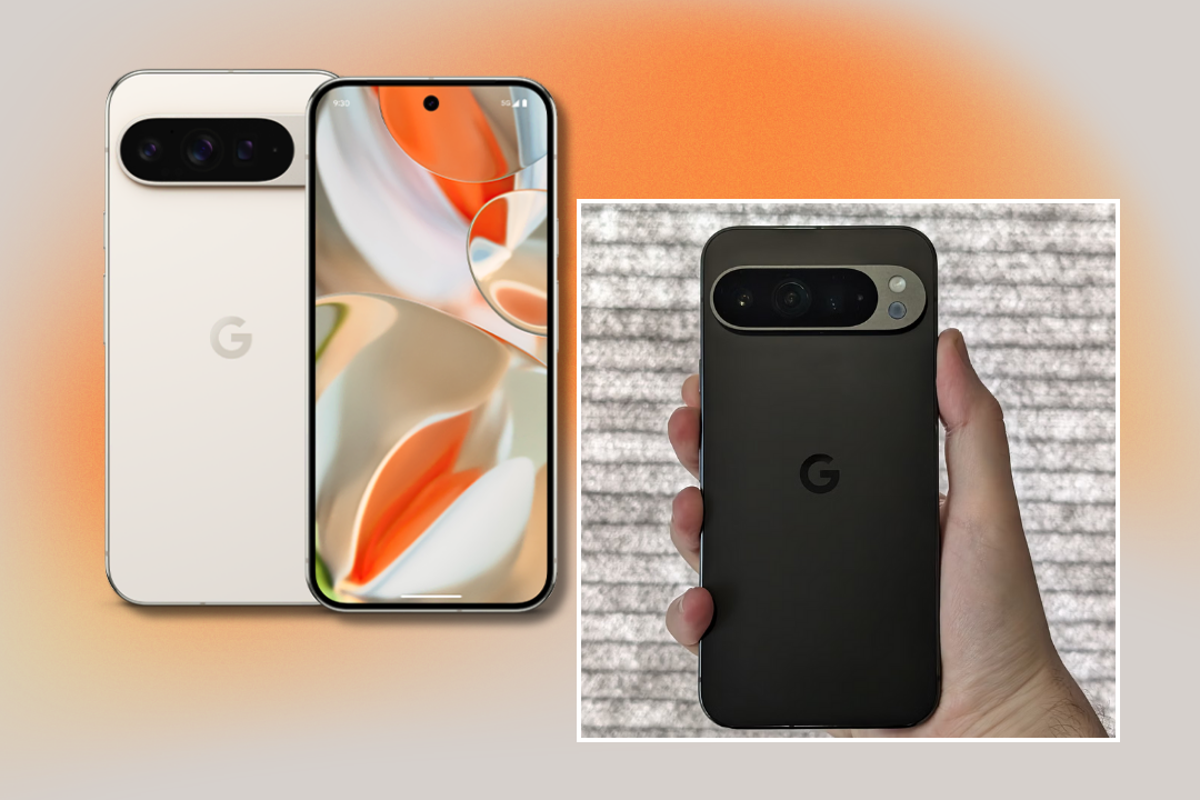This year we get three Pixel phones: the standard Pixel 9 and the more advanced Pixel 9 Pro in two sizes: a 6.3in version and a 6.8in version, called the Pixel 9 Pro XL.
Besides screen size and battery size, both Pixel 9 Pro phones run identical specifications, so you don’t have to choose between having the best Pixel phone or the one that fits in your pocket.
The main difference between the standard Pixel 9 and the Pixel 9 Pro is the camera. The cheaper phone ditches the telephoto lens, and comes with 12GB of RAM instead of the more powerful phone’s 16GB. Besides a few other small hardware differences, the experience on both phones is remarkably similar.
Cameras
Both Pro phones employ a triple-lens camera array with a 50MP main and 48MP ultrawide lens, plus a 48MP telephoto lens. The selfie camera gets a big upgrade this year, with a 42MP sensor, a wider field of view at 103 degrees and 30 per cent more light sensitivity for improved performance and better front-facing photos.
Pixel phones have always punched above their weight when it comes to taking pictures, focusing less on raw hardware specifications and more on Google’s powerful computational photography, which has been built on and developed over a decade.
This year’s camera is the best of any smartphone we’ve tested, producing brilliant pictures in all lighting conditions. On the Pro phones, you get the ‘video boost’ option, which sends your video to Google’s cloud servers for additional processing, essentially feeding every single frame through the same HDR and nightsight pipeline used for photography before spitting out an upscaled 8K video.
These video boost results are remarkable, transforming poorly lit footage from around a campfire into bright, sharp and vibrant videos. The colour grading and exposure in these videos aren’t overcooked either. Video boost manages to draw detail and depth out of dimly lit video without the results looking artificial or blown out.
The cheaper Pixel 9 differs from the Pixel 9 Pro in that it doesn’t have a telephoto lens, but this year it gets the same 50MP main sensor and 48MP ultrawide as the more advanced phone.
Panorama night sight: Night sight, which stacks several exposures to produce bright and clear photographs in low-light conditions, now works in panorama mode. A new camera system will guide you as you pan across a horizon, combining shots to create a consistent result, even at night.
Add me: This new camera feature seamlessly composites you into those group photos where you’ve been the one stuck taking the shot. Take a shot of your friends as usual, swap places, and a ghostly afterimage will help guide you into the right spot. Snap a second picture and the shots will be combined.
Auto-frame: This post-processing feature will automatically edit your photo to give it a more pleasing composition. Google has trained its AI on hundreds of thousands of photographs to teach it the ideal composition, and the Magic Editor tool can use generative fill to expand the borders of your shot and include stuff that wasn’t visible in the original framing.
Reimagine: Ask Gemini to reimagine a picture with a new background, and the AI will automatically make the edits for you, dropping in fireworks, sunsets, pink clouds and more.
Improved video boost: First launched on the Pixel 8 Pro, video boost puts every individual frame of a 4K video through its HDR and night sight pipelines to produce exceptional-looking videos. This is improved on Pixel 9 Pro, with videos rendering twice as quickly and with support for up to 8K resolutions.
Performance
Both the Pixel 9 Pro and Pixel 9 Pro XL get an upgrade to 16GB of RAM and run on the newest Tensor G4 processor. It’s fast, though you’ll barely notice an improvement if you’re upgrading from last year’s already-speedy Pixel 8. Charging speeds are improved too, with the Pixel 9 Pro able to charge to 70 per cent in just half an hour.
Another small but important upgrade is the fingerprint sensor, which switches from an optical sensor to an ultrasonic one. This makes it a lot faster but also means the display doesn’t shine a bright white light under your thumb when unlocking the phone. That’s massive news for anyone who checks their phone in bed next to a light-sleeping partner.
Design
All three Pixel 9 phones have had a redesign this year. The full-width camera bar, which spanned the entire phone and touched both sides of the frame on the Pixel 8, has been reimagined as a traditional floating camera island.
The old visor design did a great job of hiding just how thick the Pixel’s camera array truly is. Without it, the camera island is a chunky protuberance – you could hang your coat off it – but its rounded edges are sleek and the symmetry means the phone doesn’t rock from side to side when it’s laid flat on a desk. We think it looks great, and if you don’t, the official case covers everything up neatly.
The Pixel 9 Pro and Pixel 9 Pro XL are available in four colourways – obsidian, porcelain, hazel and rose quartz – and use a soft-touch matte glass on the rear and a polished metal frame. The frame is a bit of a fingerprint magnet – a crime-scene investigator wouldn’t need a brush to track you down – but the overall look of the new flat design is smart and the phone feels premium in the hand.
The best Pixel 9 Pro XL contract deals
- Pixel 9 Pro XL with 500GB data: £36.99 per month with £99 up front, Carphonewarehouse.com
- Pixel 9 Pro XL with 500GB data: £34.99 per month with £149 up front, Mobiles.co.uk

